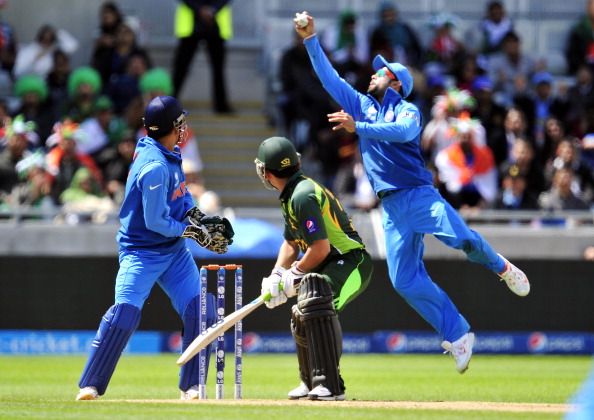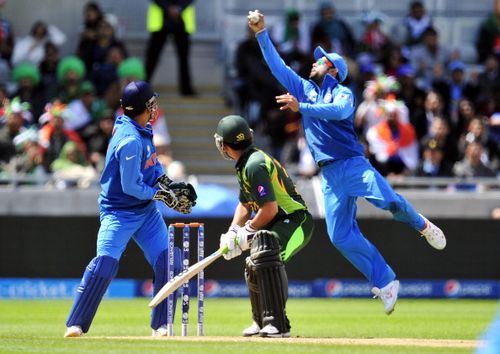
Indian cricket's 'field-good' factor

Gone are the days when India looked at its fielding like a chef does at chutney in a thali. The days when livewires like Yuvraj Singh and Mohammad Kaif were a minority are far behind us. In stark contrast to the fear of repeated failure, the winds of change sweeping Indian cricket have worked wonders for Team India. The worn out legs of Sachin Tendulkar, Rahul Dravid, Virender Sehwag and Gautam Gambhir have been replaced by the youthfully fresh legs of Ravindra Jadeja, Virat Kohli, Suresh Raina and Rohit Sharma.
In the blockbuster movie Man Of Steel, Jonathan Kent says, “The only way to know your true greatness is to push yourself to the limit”. Keeping this in mind, India’s super fielders have won matches without batting gear or bowling shoes on, thus earning the tag of the best fielding team in the ICC Champions Trophy 2013.
Piercing India’s ring of fielders was a cakewalk in the 1990s and early 2000s. But now, with the quick feet of Ravindra Jadeja, the feline sharpness of Kohli, the agility of Raina, among others, the opponents are on tenterhooks at all times. The likes of Ajinkya Rahane and Manoj Tiwary, who are not part of the Champions Trophy squad, are equally good fielders. Captain MS Dhoni himself has been extremely efficient behind the stumps, often converting half-chances into dismissals. With his belligerent batting and calm captaincy grabbing all the headlines, his technically sound keeping skills slip under the radar. The men in blue have effected the most run-outs – four – thus far, revealing a significant development in this key facet of the game that has suffered stagnation for ages.
The core of this team – the youngest in the competition with an average age of 26 – looks ready for any challenge that comes their way. The unprecedented and unexpected success in India’s fielding can be attributed to the behind-the-scenes diligence of chief coach Duncan Fletcher and fielding coach Trevor Penny. Ahead of the semi-final showdown against familiar foes Sri Lanka, Trevor Penny set up imaginary fields and had the players charge in and throw the ball at the stumps. The high-intensity training session highlighted the commitment of the Indian fieldsmen that gleamed like headlights on an unlit highway.
“Fielding is important, especially with the new ODI rules. If you can save close to 15-20 runs, it can have a big impact on the game,” said Dhoni with a straight face ahead of India’s last league fixture. Jadeja’s bullet throw to run out Robin Peterson, Kohli’s one-handed effort to sink Junaid Khan, and many such moments, were all under-the-radar game-changers.
Among those players who are not as naturally gifted as the stars of the team, Umesh Tadav is a born athlete.The Vidharba Express, much like Dale Steyn, has expressed the willingness to slide and dive at third man or fine leg to save crucial runs even after delivering a fast and fiery over. Shikhar Dhawan, patrolling the hitting zones, is also a safe fieldsman. Sensing Ravichandran Ashwin’s slackness in the inner circle, Dhoni has transformed him into a slip fielder. While Ashwin is not in the class of Rahul Dravid and VVS Laxman, he is a reliable fielder. Bhuvneshwar Kumar, too, is impressive and sensible, leaving cause for complaint only with Ishant Sharma. But it is only a matter of time before Ishant too gets smitten by the ‘field-good’ factor.
Arguably, India’s fielding, more than the batting and bowling, has been an important factor in the team strolling to the final of Champions Trophy. If they maintain the high standards they have set for themselves, there is no reason why India cannot become world-beaters across multiple formats of the game.